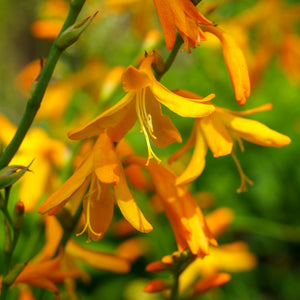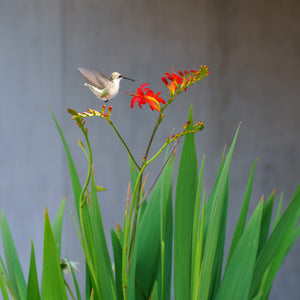The Crocosmia Guide
Crocosmia is a bold, summer-blooming perennial known for its arching stems lined with tubular, fiery-hued flowers that attract hummingbirds and butterflies. Native to South Africa, this plant adds vibrant energy to sunny gardens with shades of red, orange, and yellow. Crocosmia grows from corms and naturalizes easily, forming clumps that bloom profusely year after year. With striking foliage and vibrant flowers, it’s a favorite for mixed borders, cutting gardens, and pollinator plantings.
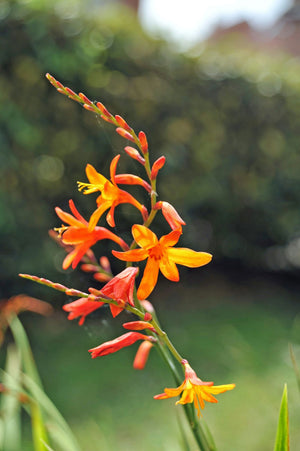
About
Crocosmia belongs to the iris family (Iridaceae) and includes several species and hybrids prized for their upright, sword-like foliage and flame-colored blooms. The most well-known species, Crocosmia 'Lucifer', boasts brilliant red flowers and a tall, stately form, making it one of the most popular cultivars. Other standout varieties include Crocosmia 'Emberglow', with glowing orange-red blooms; Crocosmia 'George Davison', which offers cheerful yellow flowers; and Crocosmia 'Orange Pekoe', with unique orange-and-cream coloring. Compact forms like 'Jochem' and 'Sharona' work well in smaller garden spaces or containers.
Crocosmia thrives in full sun and well-drained soil, where it delivers vertical interest and long-lasting summer color. It pairs beautifully with ornamental grasses, echinacea, black-eyed Susans, and other heat-tolerant perennials.
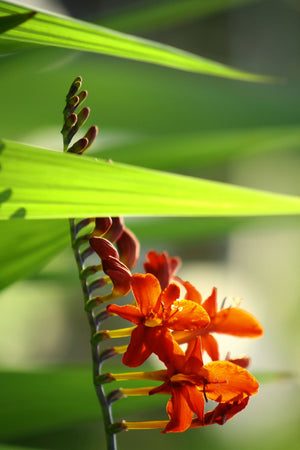
PLANTING
Crocosmia is grown from corms, which are planted in spring once the soil has warmed. Proper planting ensures strong flowering and healthy clump development:
- USDA Hardiness Zones: Hardy in Zones 6–9; in colder zones, lift and store corms in fall or treat as annuals.
- Soil: Prefers well-drained, moderately fertile soil. Amend heavy soils with compost or sand to improve drainage.
- Sunlight: Full sun (6+ hours of direct light daily) is essential for robust growth and flowering.
- Watering: Water regularly during establishment. Once established, Crocosmia is moderately drought-tolerant.
- Spacing: Plant corms 2–4 inches deep and 6–8 inches apart in groups for the best visual impact.
- Planting Time: Plant corms in spring after the danger of frost has passed and soil has warmed to at least 50°F.
Plant Crocosmia in clusters or drifts for a bold effect. Adding a layer of mulch will help retain moisture and suppress weeds.
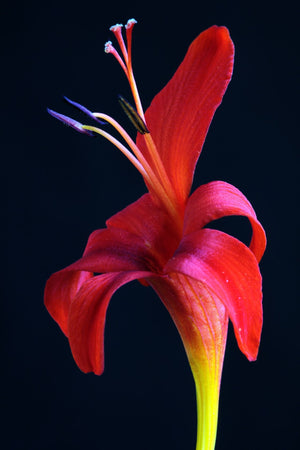
CARE
Once established, Crocosmia requires minimal maintenance and will reward gardeners with stunning displays year after year:
- Watering: Provide consistent moisture during active growth and bloom. Avoid waterlogged soil to prevent corm rot.
- Fertilizing: Feed with a balanced fertilizer in spring as new growth appears. Avoid high-nitrogen fertilizers, which can encourage foliage over flowers.
- Deadheading: Remove spent blooms to encourage continuous flowering and prevent unwanted self-seeding.
- Cutting Back: Allow foliage to die back naturally in fall to feed the corms. Cut back to the ground once foliage turns yellow or brown.
- Dividing: Divide clumps every 2–3 years in spring or fall to prevent overcrowding and encourage blooming.
- Winter Protection: In colder climates (Zone 5 or below), lift corms in fall and store in a cool, dry place until spring.
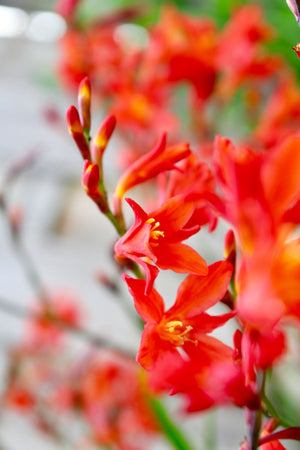
HOW TO USE
Crocosmia’s bold flowers and upright habit make it an excellent choice for adding vertical and visual drama to a variety of garden designs:
- Mixed Borders: Plant among perennials and grasses for dynamic, layered displays.
- Pollinator Gardens: A magnet for hummingbirds, butterflies, and bees.
- Cut Flower Gardens: Long stems and bright blooms make excellent cut flowers.
- Cottage Gardens: Naturalizes beautifully in informal garden designs.
- Containers: Compact varieties like 'Jochem' or 'Sharona' work well in patio pots with proper drainage.
Pair Crocosmia with plants that appreciate similar sun and soil conditions, such as salvia, rudbeckia, coreopsis, daylilies, and agastache.
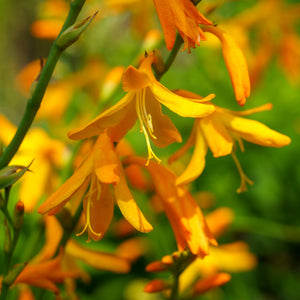
COMMON QUESTIONS
- When to plant Crocosmia bulbs? Plant corms in spring after the danger of frost has passed and soil has warmed.
- How to grow Crocosmia bulbs? Choose a sunny spot with well-drained soil. Plant corms 2–4 inches deep and keep the soil moist during establishment.
- How to plant Crocosmia bulbs? Plant in groups for a more dramatic effect, spacing corms 6–8 inches apart and 2–4 inches deep.
- When do Crocosmia bloom? Crocosmia typically blooms from mid to late summer, depending on the variety and region.
- When to cut back Crocosmia? Cut back after the foliage dies back in fall, or in early spring before new growth emerges.
- Do deer eat Crocosmia? Crocosmia is generally deer-resistant, making it a great option for wildlife-prone areas.
- Does Crocosmia spread? Yes, Crocosmia naturalizes over time by forming clumps. Divide every few years to control spread and maintain vigor.
Conclusion
Crocosmia is a vibrant, easy-to-grow perennial that lights up summer gardens with its fiery blooms and upright form. Whether you’re planting a classic like 'Lucifer' or experimenting with striking new cultivars like 'Walberton Yellow' or 'Orange Pekoe', Crocosmia adds energy and movement to your outdoor space. With its ability to naturalize, attract pollinators, and deliver long-lasting color, Crocosmia is a standout addition to any sunny garden.
The Crocosmia Collection
Sold Out
Sold Out
Sold Out
Sold Out
Sold Out

